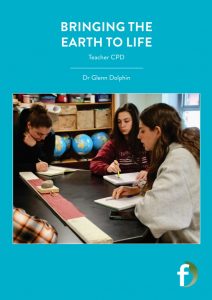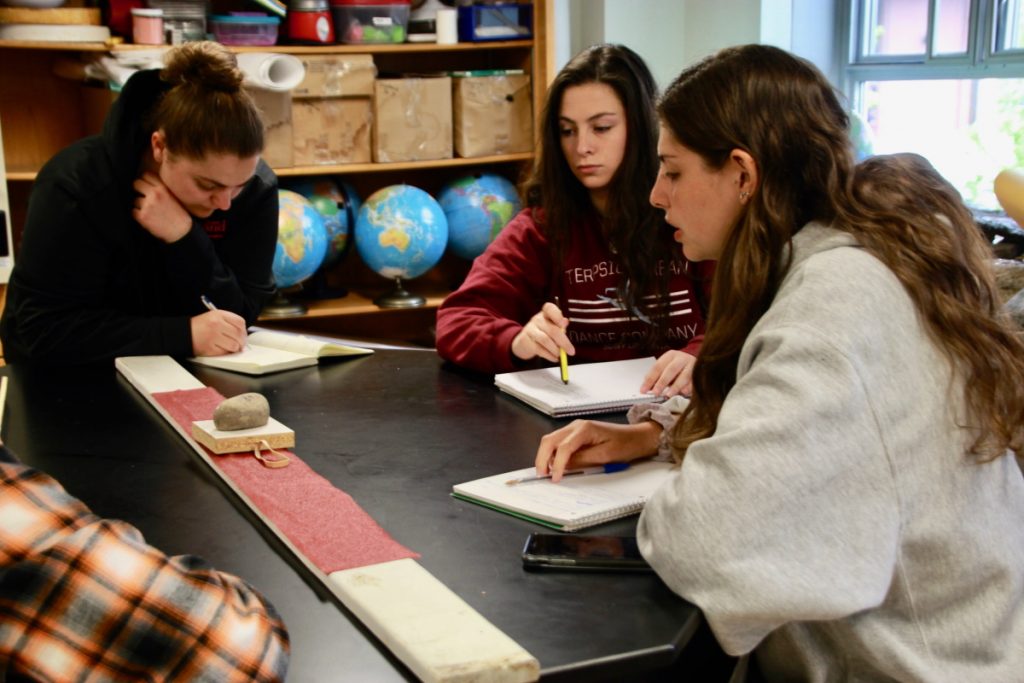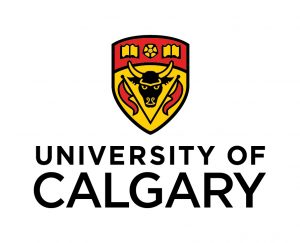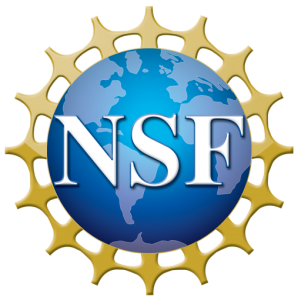Bringing the Earth to life
Geoscience is a challenging science to teach. It involves processes that occur over huge scales of time and space, and much of its subject matter is deep underground. Dr Glenn Dolphin, of the University of Calgary in Canada, is committed to tackling this challenge, through connecting teachers and students with authentic research experiences
“Delivering education is yet another metaphor that implies a transactional relationship between teacher and student. ‘I have the knowledge and I will give it to you, fill in the gaps, spoon feed you. Your job as the student is to soak it up, keep an open mind, take notes, wrap your head around it’. This sets up the notion of teaching as giving and learning as receiving, when really learning is constructing knowledge using experiences of the mesocosm (students’ daily experiences). Teaching is designing an environment where that construction will have the best chance of resembling the consensus view. It’s a far different approach, with wide-ranging implications.”
Geoscience, or Earth science, does not always get the limelight in the same way as other sciences, such as astronomy or ecology. However, it is essential to our understanding of the world, and at the heart of many societal issues. Dr Glenn Dolphin, Tamaratt Teaching Professor in the Department of Geoscience at Canada’s University of Calgary, has introduced some novel teaching methods to help geoscience get the recognition it deserves.
GEOSCIENCE’S PUBLIC IMAGE
“Earth science is a very neglected science, and professional Earth scientists are retiring faster than they can be replaced,” says Glenn. He believes a key part of this is that it is seldom given much attention, if any, in K–12 curricula, globally. This affects the number of teachers who can teach it, which then affects the quality of teaching, and many students do not see it for the fascinating subject area that it is. Geoscience has a key role in tackling humanity’s most pressing problems: climate change, extraction of energy and mineral resources, and access to clean air and water. Glenn is passionate in his belief that geoscience is a subject we should be paying more attention to.
New talented and enthusiastic Earth scientists – and Earth science teachers – are sorely needed. How can Earth science teachers be taught to teach well? “Traditional teaching methods, such as lectures and essays, are not nearly as effective as evidence-based approaches,” says Glenn. “This is where the model-based approach and authentic research experiences come in.”
MODELS TO UNDERSTAND THE EARTH
What’s more engaging, an essay about tectonic plates, or a physical model of them in action? Geoscience is complex, and the processes it studies happen at a far grander scale – in terms of both space and time – than we are accustomed to. To help teach this complexity and make the abstract concepts more approachable, physical and virtual models are invaluable tools.
For instance, virtual outcrop models are one handy device in this arsenal. They are computer-generated 3D models of real-world rock outcrops. Drones capture hundreds or thousands of images of the physical outcrop from every angle, and the software ‘stitches’ these images together. Students can then explore these outcrops from the comfort of their computers.
GUIDING TEACHERS
As part of a team of teacher educators, Glenn worked with trainee teachers to address the concepts that are difficult to teach. Once teachers had selected a concept, they and Glenn’s team researched it and built a model to act as a teaching aid. Teachers were enthusiastic about the research and reported they had learnt a lot from the ‘design and build’ process.
They presented these models at a science teachers’ conference, where other science educators also found them instructive. Many have also been rolled out to real classrooms, to see how successful they are in making the teaching and learning process easier.
Glenn hopes geoscience teachers “will continue to enhance their learning and teaching by continued research and development of models.” However, he wants teachers to be reflective as well as ambitious. He adds, “Hopefully, they will also become critical of models they use as many actually pose problems for learning as well as offer solutions.”
Reference
https://doi.org/10.33424/FUTURUM104
“Delivering education is yet another metaphor that implies a transactional relationship between teacher and student. ‘I have the knowledge and I will give it to you, fill in the gaps, spoon feed you. Your job as the student is to soak it up, keep an open mind, take notes, wrap your head around it’. This sets up the notion of teaching as giving and learning as receiving, when really learning is constructing knowledge using experiences of the mesocosm (students’ daily experiences). Teaching is designing an environment where that construction will have the best chance of resembling the consensus view. It’s a far different approach, with wide-ranging implications.”
Geoscience, or Earth science, does not always get the limelight in the same way as other sciences, such as astronomy or ecology. However, it is essential to our understanding of the world, and at the heart of many societal issues. Dr Glenn Dolphin, Tamaratt Teaching Professor in the Department of Geoscience at Canada’s University of Calgary, has introduced some novel teaching methods to help geoscience get the recognition it deserves.
GEOSCIENCE’S PUBLIC IMAGE
“Earth science is a very neglected science, and professional Earth scientists are retiring faster than they can be replaced,” says Glenn. He believes a key part of this is that it is seldom given much attention, if any, in K–12 curricula, globally. This affects the number of teachers who can teach it, which then affects the quality of teaching, and many students do not see it for the fascinating subject area that it is. Geoscience has a key role in tackling humanity’s most pressing problems: climate change, extraction of energy and mineral resources, and access to clean air and water. Glenn is passionate in his belief that geoscience is a subject we should be paying more attention to.
New talented and enthusiastic Earth scientists – and Earth science teachers – are sorely needed. How can Earth science teachers be taught to teach well? “Traditional teaching methods, such as lectures and essays, are not nearly as effective as evidence-based approaches,” says Glenn. “This is where the model-based approach and authentic research experiences come in.”
MODELS TO UNDERSTAND THE EARTH
What’s more engaging, an essay about tectonic plates, or a physical model of them in action? Geoscience is complex, and the processes it studies happen at a far grander scale – in terms of both space and time – than we are accustomed to. To help teach this complexity and make the abstract concepts more approachable, physical and virtual models are invaluable tools.
For instance, virtual outcrop models are one handy device in this arsenal. They are computer-generated 3D models of real-world rock outcrops. Drones capture hundreds or thousands of images of the physical outcrop from every angle, and the software ‘stitches’ these images together. Students can then explore these outcrops from the comfort of their computers.
GUIDING TEACHERS
As part of a team of teacher educators, Glenn worked with trainee teachers to address the concepts that are difficult to teach. Once teachers had selected a concept, they and Glenn’s team researched it and built a model to act as a teaching aid. Teachers were enthusiastic about the research and reported they had learnt a lot from the ‘design and build’ process.
They presented these models at a science teachers’ conference, where other science educators also found them instructive. Many have also been rolled out to real classrooms, to see how successful they are in making the teaching and learning process easier.
Glenn hopes geoscience teachers “will continue to enhance their learning and teaching by continued research and development of models.” However, he wants teachers to be reflective as well as ambitious. He adds, “Hopefully, they will also become critical of models they use as many actually pose problems for learning as well as offer solutions.”
DRAMA AND BUILDING
Glenn believes that the intersection between science and the humanities should be embraced to make learning as captivating as possible. “I am currently collaborating with the university’s drama department to produce a play about four famous female geologists from different time periods,” he says. “It will explore their life histories, their research and the role that gender played in their careers.”
He is also working with the architecture department to develop a geological ‘time walk’. “It will be a scale model of the history of the Earth, in the form of a path,” he says. “People can walk along it and get a sense of the scale of geological time.”
Glenn is passionate about looking at the human stories behind science. For him, the history of how scientific knowledge has come to be is as important as the science. Glenn explains, “Demonstrating how science ‘fits’ into the rest of life provides a broader view of how science emerges from researchers’ real lives and real passions.”
LOOKING TO THE FUTURE
Glenn hopes that his work will continue to be used by teachers to enhance their knowledge and teaching skills. “These teachers will have contact with thousands of students during their careers,” he says. “That is where the big payoff will be. Hopefully, they will bring other teachers along with them on this journey. If others see how successful they are, these teachers become models for future teachers.” Inspiring teachers lead to a ‘snowballing’ change in teaching style.
For the future of geoscience itself, there is a lot of fascinating and important research waiting to be done. There is ample opportunity for entry into the field, especially for those who are passionate about fixing the world’s problems.
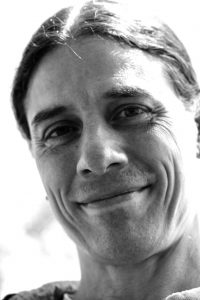 DR GLENN DOLPHIN
DR GLENN DOLPHIN
Tamaratt Teaching Professor
Department of Geoscience
University of Calgary, Canada
FIELD OF RESEARCH: Geoscience Education
RESEARCH PROJECT: Developing a range of engaging geoscience teaching and learning strategies
CONNECTING GEOSCIENCE WITH HISTORY, PHILOSOPHY AND DRAMA – GLENN ANSWERS YOUR QUESTIONS
CAN YOU GIVE SOME EXAMPLES OF THE DIFFICULT-TO-TEACH CONCEPTS YOU HAVE ADDRESSED WITH TRAINEE TEACHERS?
Our foundational theory of the earth (plate tectonics) is a very difficult concept to teach. First, it is very broad in scope. It is the underlying cause for the expressions (faults, folds, topography, earthquakes, volcanoes, etc.) we observe at the surface. Some processes, like mountain building, occur over millions of years and thousands of square kilometres. Many geologic phenomena, such as mantle convection and migration, groundwater flow, metamorphism and lithification, happen below the surface.
Earth has been conducting a 4.6-billion-year-long experiment, controlling none of the variables, with unknown starting conditions. We are like forensic scientists showing up at a crime scene, but one where there has been no control on who enters or leaves, nor what they might take or leave at the scene. As teachers, we can’t just run some experiment where we control all the variables and see what happens. We just don’t have an extra Earth lying around that we can test, say, a meteorite impact to cause dinosaur extinction.
WHILE MODELS ARE A POWERFUL TEACHING TOOL, THEY CAN ALSO POSE PROBLEMS FOR LEARNING. WHAT CAN TEACHERS DO TO AVOID PITFALLS?
Models are important because they bring experiences to students from the microcosm and macrocosm into the mesocosm. However, models, by their very nature as representations, highlight certain aspects of reality and hide others. It is these hidden aspects that can cause problems. This can come down to the very language we use as scientists when describing concepts.
For instance, in research I have done, I have noted that students have a difficult time developing an understanding of earthquakes that are similar to the scientific consensus. One reason is that when we talk about the dynamics of the surface of the earth, we talk about tectonic plates. This is a metaphor, a kind of model. While students are not prepared to assign meaning to the word tectonic (many will be hearing it for the first time), students will have had many experiences with plates – ceramic plates they use to eat from. Because we make meaning chiefly using our concrete experiences in the mesocosm, they use these experiences (automatically and unconsciously) as the raw materials for understanding the nature of the crust.
To the students, plates are separate and brittle, and can be pushed together and break when dropped. However, earthquakes happen when rocks fail after being stressed elastically. So, I decided to use another model, which describes the lithosphere of the Earth as the skin of the Earth. Students understand the concept of skin, which can highlight the elasticity in rocks. This then translates into the energy for earthquakes. Skin is a whole unit, not parts that are getting shoved together or pulled apart; it will deform under stress, but also return elastically when the stress is removed.
Research shows that students have a tendency to equate the model with reality. So, using multiple models, with deliberate intent for a single concept, helps students develop a more robust understanding of the concept. We are also stuck with the language of science, which is mostly metaphorical (greenhouse effect, black hole, DNA code, messenger RNA, laws of nature, etc.). We are not going to change this, but we can analyse these metaphors for what they highlight and hide, and then add in other models to help fill the gaps.
WHAT DO YOU MEAN BY HISTORICAL NARRATIVES AND IN WHAT WAY DO THESE CASE STUDIES AND NARRATIVES ‘ENRICH’ YOUR CLASSES?
Historical narratives are the stories I tell to contextualise the development of a particular scientific concept. Sometimes, the history is included in the textbook, but, usually, it has been abridged tremendously and mythologised. The narratives add the human component to the scientific process. They highlight the contingent nature of scientific advancement. People actively create knowledge. They do not discover it, as if knowledge is sitting under a rock waiting to be revealed. That creative process is bound to the particular time and place where the scientist is doing the construction.
By demonstrating, repeatedly, the constructive and very social nature of scientific knowledge development, students will understand that scientists are human, too. And if scientists are human, and the students are human, then students could also be scientists! There is burgeoning research that suggests that putting a human face to science helps recruit and retain women and other underserved populations into the sciences.
Also, humans are wired for storytelling. It is how we communicate our knowledge to others. If we can contextualise scientific concepts within the story of their development, students are more able to remember them. This especially works for non-science students.
DRAMATISATION IS ANOTHER FEATURE OF YOUR TEACHING PHILOSOPHY. DOES THIS TECHNIQUE REALLY HELP TO ENFORCE THE LEARNING NEEDED TO PASS EXAMS?
Well, first, to be quite frank, I am not worried about passing exams. However, I realise we live in a system bathed in competition and getting the highest scores on tests as some indication of worth (pardon my cynicism). I can’t speak for the dramatisation itself, but I am gathering data to show that my approach is effective in facilitating students’ conceptual development of geological phenomena in that they develop a more nuanced understanding of the nature of science – something that will not happen in a traditional content-heavy, lecture-based format.
WHAT WOULD YOU SAY TO TEACHERS WHO SAY THEY JUST DON’T HAVE THE TIME OR SKILLS TO SET UP ENACTMENTS OF GEOSCIENCE CONCEPTS?
Be easy on yourself. Let your passions and interests guide your teaching and the risks you want to take. It’s far easier to ask for forgiveness than it is to ask for permission. My current course structure is the result of at least a decade’s worth of development, a little bit at a time. It is also a vast departure from what has been done in the past. I may not be ‘covering’ as much vocabulary but many of my students walk away from the course thinking science is interesting and that they could do it.
WHAT FEEDBACK HAVE YOU HAD FROM TEACHERS AND/OR STUDENTS?
My colleagues from the humanities like the braiding of history, philosophy, art and drama with science. Since STEM education has become the gold standard for the pipeline that everyone must get shoved into, humanities have really taken a back seat, even with the word “human” within it. It’s unfortunate. So, getting them on board with any kind of collaborative effort was relatively easy.
My science colleagues are mixed. Some like the novelty and find an interest in the exploration of how a certain concept came to be. Others believe research into teaching isn’t the best way to spend time.
Students have the same response. Some aren’t interested in science as a process but, rather, see it as a list of things to memorise. Others really like the broader scope of history and philosophy.
DARWIN VS WALLACE
GLENN CHALLENGES STUDENTS TO RETHINK SCIENTIFIC DISCOVERIES:
Alfred Russell Wallace wrote to Charles Darwin about an idea concerning a “struggle for survival” that may pressure the development of new species from former ones. Darwin had been thinking about this idea for decades but had not written about it. The letter from Wallace was the spark that got Darwin to write and publish On the Origin of Species. Wallace had far more notes and evidence for the idea than Darwin had and he was going to write about it when he came back from his expedition. But, as Darwin wrote about it first, we now have Darwinian evolution rather than Wallacian evolution. We can ask students: Who should get credit? When does scientific knowledge become scientific knowledge? These types of independent discoveries happen all the time, but the ‘winner’ is usually the one who publishes first. Is that a reasonable criterion?
HOW DID DR GLENN DOLPHIN BECOME A GEOSCIENTIST?
WHAT DID YOU WANT TO BE AS A CHILD?
I have wanted to be a geologist ever since I can remember. As a kid, I would keep pretty rocks in a large milk container and would wash and organise them. I often went to rock and mineral shows, bought crystals, and participated in a local rock and mineral club. I was surrounded by very supportive people, especially my dad and several teachers, who really influenced my trajectory into geology.
WHO INSPIRED YOU IN YOUR CAREER?
I have had many inspirations throughout my life. I had an enthusiastic Earth science teacher in ninth grade, and several professors at my local university helped me decide where to study. I had a great mentor when I then studied to become a teacher, after which I went on to teach at my old high school alongside two of my former teachers. These two people were crucial in helping me develop my teaching style, letting me explore alternative methods and helping me get leadership roles. I then got a PhD in science education, guided by many inspirational figures, and even in my current post I have great colleagues who help support my work.
WHAT CHALLENGES HAVE YOU FACED IN YOUR CAREER?
My toughest personal decision was leaving my daughter in New York when I went to work in Calgary. She was nine at the time and I regret missing many moments of her growing up. Professionally, my greatest challenge is getting more ‘traditional’ geoscientists to consider this kind of work important. It seems ‘fluffy’ to them because they don’t consider it hard science, and I find it difficult when I feel my work is not valued.
WHAT ATTRIBUTES HAVE HELPED YOU BECOME SUCCESSFUL?
I have a lot of energy and passion for what I do, and students can sense that and become passionate themselves. A thank you note from a student of mine said, “I am studying to be a teacher and feel so enthused after taking your class. Your passion for teaching and creating inspired, engaged learners is truly motivating.”
WHAT ARE YOU MOST PROUD OF?
I am most proud of my family: three wonderful daughters and my wife, who is more than anyone deserves. My second proudest achievement is a textbook I wrote for one of my geology courses: “Stories in Geology: What we know and how we figured it out.” This book helps to fill two gaps in science teaching: the ‘process of science’, and the role of humanities and history in science.
Do you have a question for Glenn?
Write it in the comments box below and Glenn will get back to you. (Remember, researchers are very busy people, so you may have to wait a few days.)

